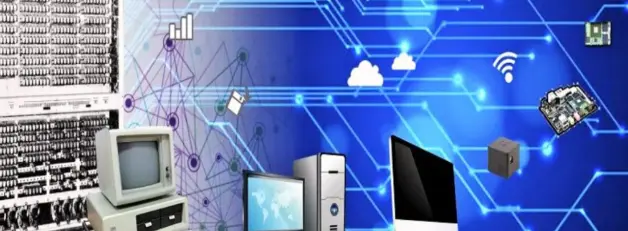From Abacus to AI: A Journey Through the Evolution of Computers
The computer, once a behemoth relegated to air-conditioned rooms, has become an indispensable part of our lives. But this ubiquitous technology has a surprisingly young history, marked by fascinating leaps in innovation. Today, we embark on a whirlwind tour through the evolution of computers, exploring the milestones that shaped the digital world we know today.
The Mechanical Marvels (1600s – 1940s): Before the Buzz of Electricity
Our journey begins centuries before the transistor, in the realm of mechanical calculators. The abacus, a bead frame used for calculations since ancient times, laid the groundwork for more complex devices. In the 17th century, Blaise Pascal invented the Pascaline, a mechanical calculator that could perform addition and subtraction. Over the next few centuries, machines like the Babbage difference engine and the Analytical Engine by Charles Babbage laid the theoretical foundation for modern computers, even incorporating concepts like memory and conditional branching.
The Dawn of the Electronic Age (1940s – 1950s): Vacuum Tubes Light the Way
The 20th century ushered in a new era of computing with the development of electronic computers. The ENIAC (Electronic Numerical Integrator and Computer), built in the US during World War II, was a behemoth – a room-sized machine filled with thousands of vacuum tubes. While bulky and prone to overheating, the ENIAC marked a significant leap forward in processing power and speed. The EDVAC (Electronic Discrete Variable Automatic Computer), its successor, introduced the concept of a stored program, where both instructions and data were held in memory, paving the way for more versatile computers.
The Transistor Revolution (1950s – 1960s): Smaller, Faster, More Reliable
The invention of the transistor in 1947 by John Bardeen, Walter Brattain, and William Shockley miniaturized the world of computers. Transistors replaced bulky vacuum tubes, leading to smaller, faster, and more reliable computers. This era saw the birth of the first commercial computer, the UNIVAC I, used for the 1952 US presidential election. Programming languages also evolved, with the development of FORTRAN and COBOL, making computers more accessible to a wider range of users.
The Integrated Circuit Takes Over (1960s – 1970s): The Rise of the Microchip
The invention of the integrated circuit (IC), or microchip, by Jack Kilby in 1958, further revolutionized computing. By cramming millions of transistors onto a single chip, ICs dramatically reduced the size and cost of computers. This era saw the birth of the minicomputer, a smaller and more affordable alternative to mainframes, and eventually, the microcomputer. The Altair 8800, released in 1975, is considered a pioneer of the microcomputer revolution, paving the way for personal computers.
The Personal Computer Era (1970s – Present): Computing for the Masses
The development of the microprocessor, a single-chip CPU, in the 1970s truly democratized computing. The IBM PC, launched in 1981, became a household name, ushering in the age of the personal computer (PC). The rise of user-friendly operating systems like MS-DOS and Windows, coupled with the development of the graphical user interface (GUI), made computers more accessible than ever before. The invention of the World Wide Web in the 1980s further revolutionized communication and information access, forever changing the landscape of computing.
The Present and Beyond: The Age of AI and Quantum Computing
Today, computers are ubiquitous, embedded in everything from smartphones and wearables to cars and household appliances. The field of computer science continues to evolve rapidly, with advancements in artificial intelligence (AI), machine learning, and quantum computing holding immense promise. AI is transforming industries, with applications in healthcare, finance, and autonomous vehicles. Quantum computing has the potential to revolutionize fields like materials science and drug discovery.
The story of the computer is a testament to human ingenuity. From the mechanical marvels of the past to the sophisticated machines of today, computers have come a long way. As we look towards the future, the possibilities seem endless. The journey from the abacus to AI is a mere glimpse into the ever-evolving world of computers, a world that continues to shape our lives in profound ways.


Comments are closed, but trackbacks and pingbacks are open.